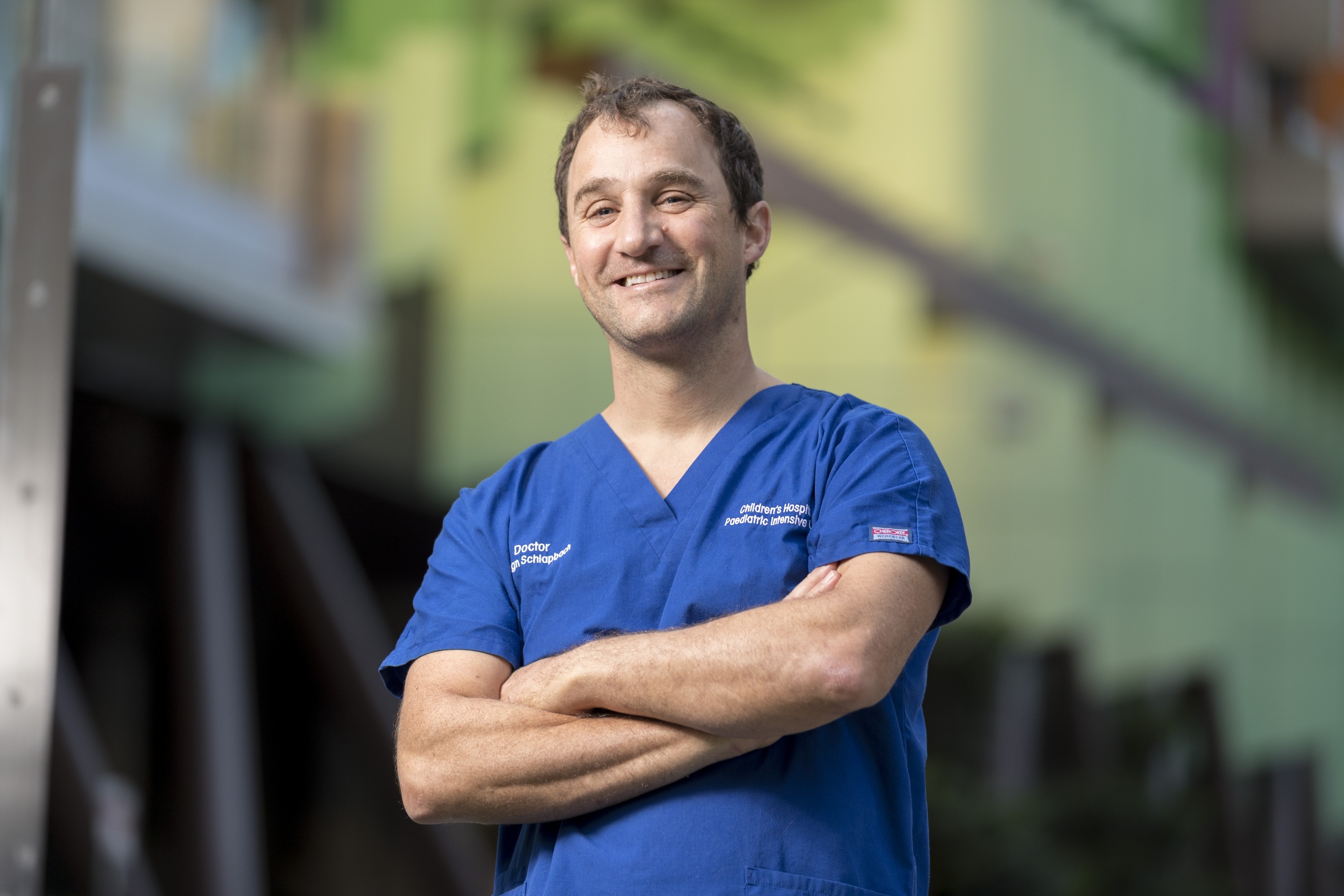Having settled back down in his hometown of Zurich, former Chair of the Paediatric Sepsis Clinical Advisory Group and Paediatric Intensivist at the Queensland Children’s Hospital, Assoc. Professor Luregn Schlapbach recounts his time in Queensland and his passion for improving outcomes from sepsis.
For Luregn, his interest in sepsis and childhood infections stems from their somewhat mysterious nature. “Infections have been a challenge for the human species for our entire evolution. Yet it is intriguing that even in an era where we have vaccines, access to antibiotics, and even sophisticated intensive care support, sepsis remains a leading killer disease,” he said.
During the past 20 years in Queensland, the type of infections affecting children have changed, with meningococcal infections the leading cause of sepsis in the year 2000. Large-scale public awareness and vaccination campaigns appear to have had the desired effect since this time, with meningococcal sepsis much less common nowadays.
“In contrast, we see more severe staph or streptococcal infections [now]. Overall, the proportion of children with complex healthcare issues seems to be increasing too,” Luregn said.
And of course – now there’s COVID to contend with. “The COVID pandemic has showed how vulnerable we can be for infections. Sadly, although children are less often affected by COVID, many more children die of bacterial sepsis around the world in comparison to COVID; and even COVID can result in sepsis. Hence, sepsis remains a really big problem,” Luregn said.
“What strikes me about sepsis is its time-sensitive nature: if we get better at recognising the disease, and then initiating treatment in a timely fashion, this can make a tremendous impact and save many lives.”
Which is exactly what Luregn has dedicated most of his career to in recent years - leading the development of the Queensland Health emergency department paediatric sepsis pathway. “When we started, sepsis was not much of a topic, despite the fact that many families were affected, and many clinicians felt practice could be improved. Over the course of just three years, awareness has improved considerably, and the sepsis pathway is becoming a standard.”
The pathway’s development spanned three years; from a collaborative co-design approach, pilot phase and formal evaluation, with consumers engaged and involved throughout the project.
“The strong engagement of consumers was essential for this shift in my opinion and I am very thankful for what the families have done for the sepsis campaign in Queensland,” Luregn said.
The pathway has now been endorsed by key clinical groups and available to order via Winc, along with the corresponding adult emergency department sepsis pathways.
Reflecting on the project, Luregn describes it as “a very humbling experience”. “To witness how the needs of families, strategic direction within the Department and clinician-driven initiatives went hand-in-hand; I believe that this collaborative approach was key to the success.”
“Outside the UK, many European countries do not have structured sepsis quality improvement initiatives. It is important to realise that the work done in Queensland and New South Wales can be a role model for many services, and should be shared internationally,” Luregn said.
And thanks to a recent award win, Queensland’s work is gaining an international following. The Paediatric Sepsis Project was the winner of the 2020 Global Sepsis Alliance Award in the Governments and Health Authorities category. The awards honour outstanding sepsis awareness and education initiatives.
“But we still have a lot to do. I believe sepsis quality improvement should become a mandatory part of education of healthcare staff, and part of hospital accreditation. In addition, we have to implement digital solutions to allow to track what’s happening and keep improving,” Luregn said.
Fortunately, much of this is already happening. The Australian Commission on Safety and Quality in Healthcare is currently updating the deteriorating patient standard to explicitly include sepsis, meaning hospitals will have to provide evidence of their ability to recognise and respond to a patient with sepsis. The Queensland Sepsis Program and Paediatric Sepsis Project are also working collaboratively with NSW’s Clinical Excellence Commission to develop digital solutions for sepsis.
Clinical Excellence Queensland would like to thank Assoc. Prof Schlapbach for leading this body of work and his overall contribution to the Queensland Sepsis Program. As well as his inspiring and passionate commitment to improving the health of our young people. Importantly, a dedicated group of individuals is continuing this work, engaging with clinicians and consumers across Queensland to help reduce the incidence and burden of sepsis.
For more information on the Queensland Sepsis Program, visit the website.
